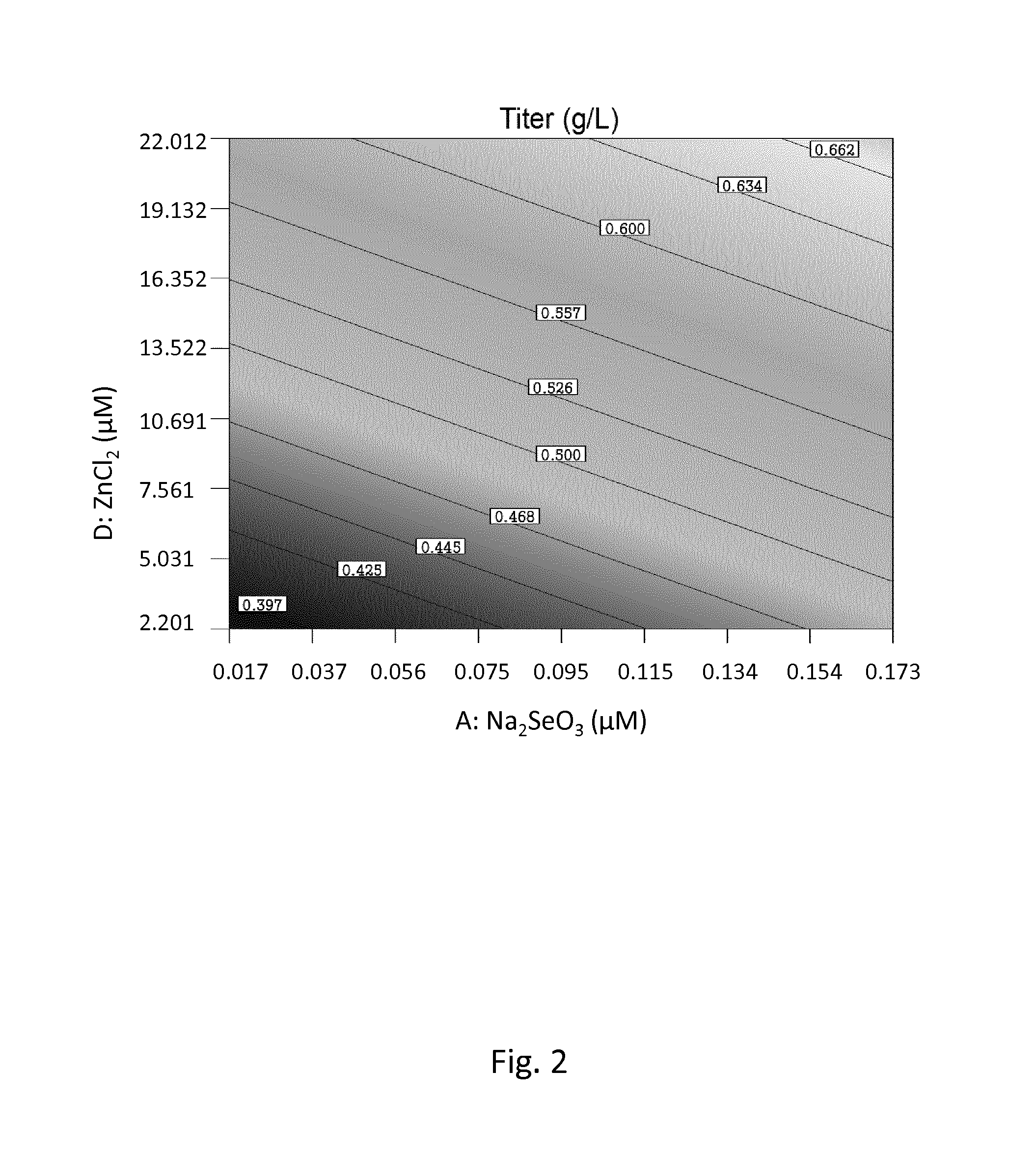CELL CULTURE MEDIUM AND PROCESS FOR CONTROLLING a-AMIDATION AND/OR C-TERMINAL AMINO ACID CLEAVAGE OF POLYPEPTIDES
- Summary
- Abstract
- Description
- Claims
- Application Information
AI Technical Summary
Benefits of technology
Problems solved by technology
Method used
Image
Examples
example 1
Effect of PAM Inhibitors on Amino Acid Amidation / Proline Amid Formation
[0157]Experiments (using different illustrative glycoproteins) were performed in shake flask (SF) systems, where 500 L SFs with a final volume of 125 ml were used. All experiments started by thawing of a research working cell bank (rWCB), such as CHO cell line DP-12 (CHO DP-12 clone #1934 [CHO DP-12, clone #1934 aIL8.92 NB 28605 / 14] (ATCC® CRL-12445™) producing recombinant human anti-IL-8 or CHO-SSF cells expressing a monoclonal antibody directed to tumour necrosis factor, TNF (see PCT / EP2011 / 074181 for further details) followed by several subcultivations under standard conditions according to manufacture instructions until enough cells for the inoculation were available For all experiments, a 14 days generic fed batch fermentation was used and a generic feeding regime comprising feeding of glucose, glutamine and amino acids was performed. All SFs were incubated in a shaker incubator (Kuhner, Switzerland) at the ...
example 2
Evaluation of Individual Trace Elements Concentration
[0162]An experiment investigating variable concentrations of individual trace elements on C-terminal α-amidation was performed. To detect the trace elements having a major influence on PAM activity, six trace elements that are included in highly enriched platform media, were first tested using a MinRes IV screening design (Design Expert software). In the following, only these trace elements which exhibit a significant effect on C-terminal α-amidation are further discussed and outlined in detail below. Hence, the concentrations for the tested elements, i.e., selenium, zinc and copper are described in Table 1 below.
TABLE 1Setup of MinRes IV design with trace elementsTrace elementMinimum [μM]Maximum [μM]Sodium Selenite (Na2SeO3)0.0170.173Zinc Chloride (ZnCl2)2.20422.012Copper Chloride (CuCl2•2H20)0.2042.041
[0163]The experiment was performed in 500 ml SF with a final volume of 125 ml. After 14 days of fed batch bioprocess, harvests we...
example 3
Increased Concentration of Selenium and Zinc Increases the Gram (g) of Protein Per Liter (L) of Harvest
[0164]The standardized effects of the tested trace elements on titer (gram per liter) were first displayed graphically on Pareto Chart where the main effects (tested elements) were selected by clicking on the effects that were obviously larger than the others. Effects that were above the Bonferroni limit were certainly significant and effects that were above the t-Value limit were possibly significant. Effects that were below the t-Value limit were not selected as they were not significant. After selecting significant effects, the ANOVA statistical program was employed to confirm that only statistically significant effects were included in the model. The media additives that showed the main effect on a certain response displayed P-values lower than 0.1.
[0165]Among the factors (i.e. tested trace elements) having a major positive impact on titer, zinc and selenium were calculated to ...
PUM
| Property | Measurement | Unit |
|---|---|---|
| Fraction | aaaaa | aaaaa |
| Fraction | aaaaa | aaaaa |
| Fraction | aaaaa | aaaaa |
Abstract
Description
Claims
Application Information
 Login to View More
Login to View More - R&D
- Intellectual Property
- Life Sciences
- Materials
- Tech Scout
- Unparalleled Data Quality
- Higher Quality Content
- 60% Fewer Hallucinations
Browse by: Latest US Patents, China's latest patents, Technical Efficacy Thesaurus, Application Domain, Technology Topic, Popular Technical Reports.
© 2025 PatSnap. All rights reserved.Legal|Privacy policy|Modern Slavery Act Transparency Statement|Sitemap|About US| Contact US: help@patsnap.com



